Exam Details
Exam Code
:301BExam Name
:BIG-IP Local Traffic Manager (LTM) Specialist: Maintain & TroubleshootCertification
:F5 CertificationsVendor
:F5Total Questions
:209 Q&AsLast Updated
:Mar 21, 2025
F5 F5 Certifications 301B Questions & Answers
-
Question 21:
-- Exhibit
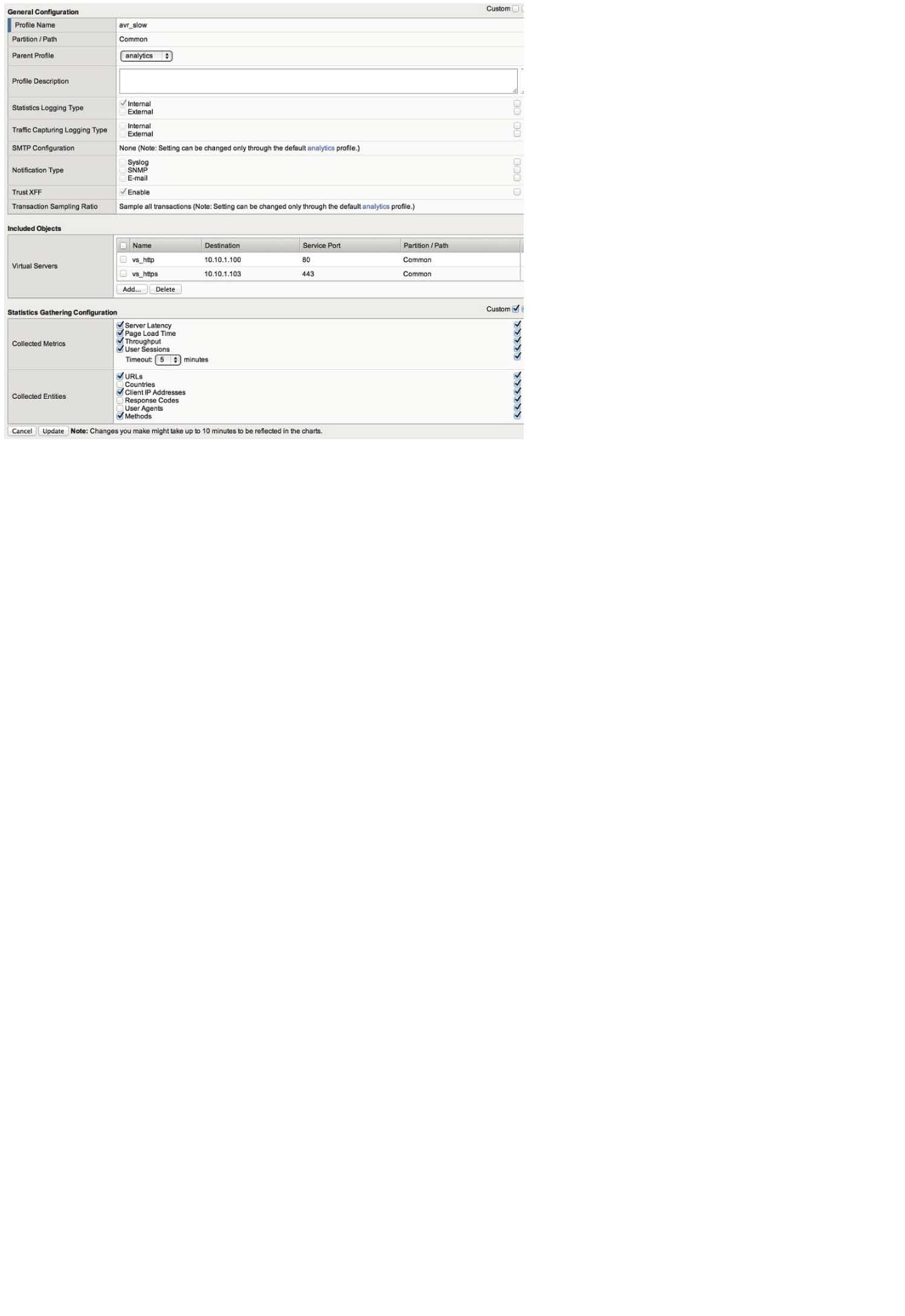
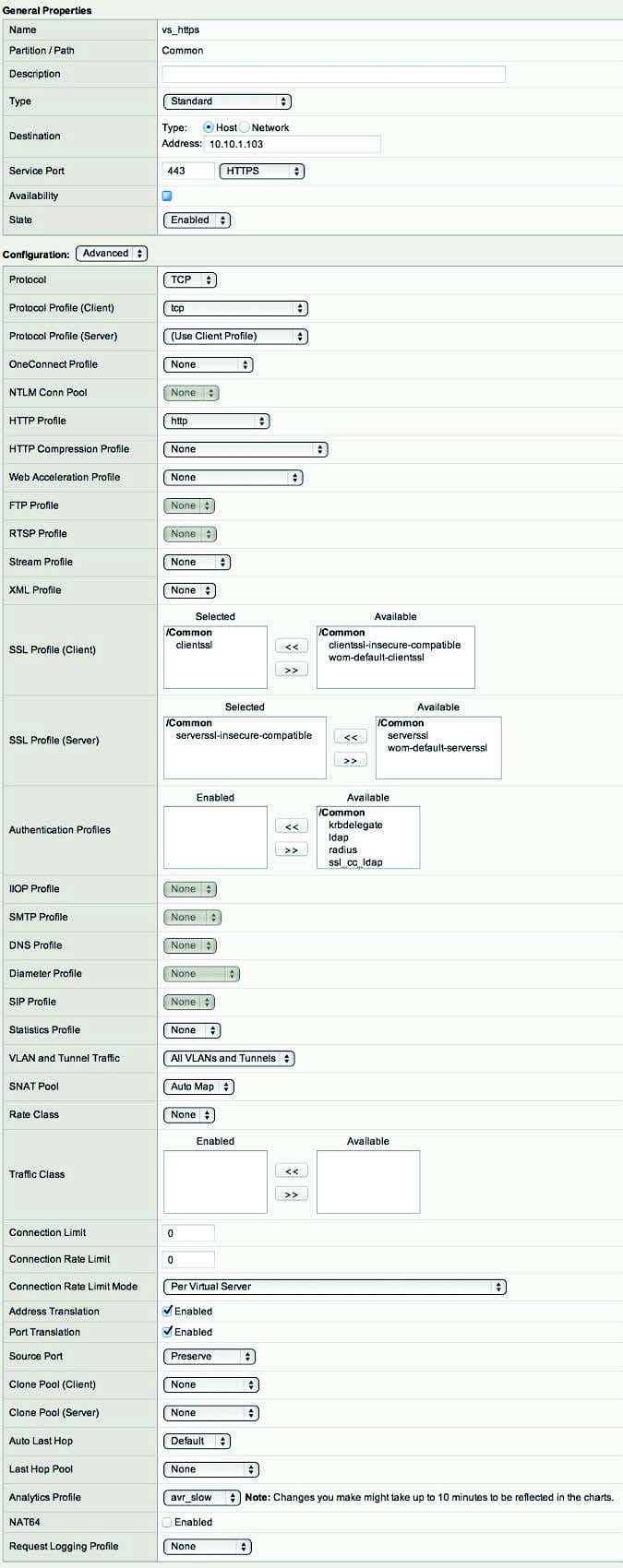
-- Exhibit -Refer to the exhibits.
When observing the AVR statistics for the HTTPS_VS, an LTM Specialist realizes that HTTP status codes are NOT being recorded.
How should the LTM Specialist modify the configuration to record the HTTP status codes?
A. assign a streaming profile to the virtual server
B. assign client SSL and server SSL profiles to the virtual server
C. enable Statistics Logging Type, External on the analytics profile
D. enable Collected Entities, Response Codes on the analytics profile
-
Question 22:
-- Exhibit

-- Exhibit -Refer to the exhibits. A virtual server has been configured for SSL offload on a single-arm network. On average, the virtual server will be handling 100,000 connections, with a peak of 130,000 connections. Between the virtual server and the web servers there is a
single reverse proxy to provide site caching. The proxy is configured to perform source IP persistence before contacting the web servers. The site is logging users out immediately after logging them in. What should the LTM Specialist do to resolve this issue?
A. Add a source address persistence profile to the virtual server.
B. Create an iRule to add client IP persistence to a SNAT pool member.
C. Change the virtual server server-side TCP profile to tcp-lan-optimized.
D. Configure the virtual server HTTP profile to insert an X-Forwarded-For header.
-
Question 23:
-- Exhibit
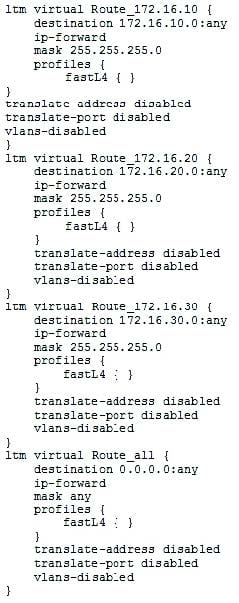
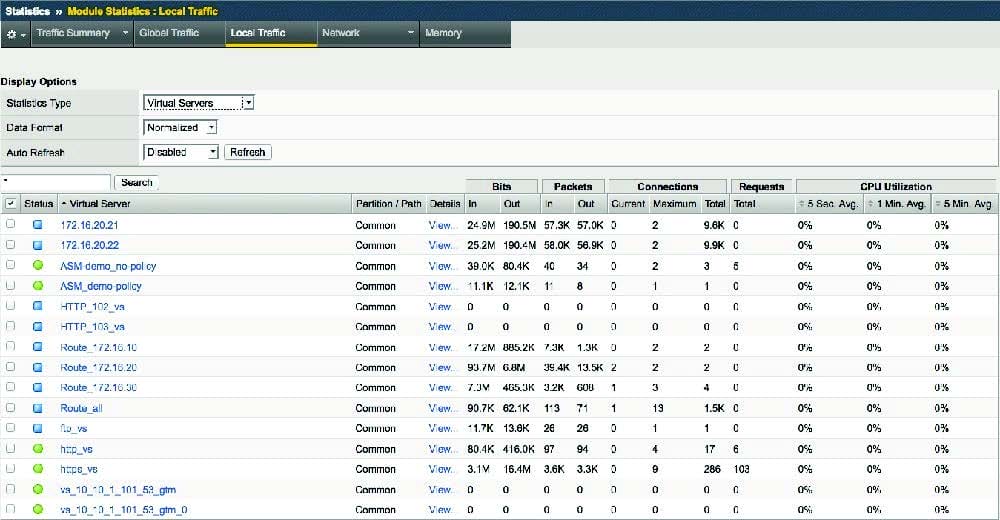
-- Exhibit -Refer to the exhibits.
An LTM device has been configured for load balancing a number of different application servers. Configuration changes need to be made to the LTM device to allow administrative management of the servers in 172.16.10/24, 172.16.20/24,
and 172.16.30/24 networks. The servers require outbound access to numerous destinations for operations.
Which solution has the simplest configuration changes while maintaining functionality and basic security?
A. Remove 172.16.10.0:0/24, 172.16.20.0:0/24, and 172.16.30.0:0/24, and keep 0.0.0.0:0/0.0.0.0 enabled on all VLANs.
B. Replace 172.16.10.0:0/24, 172.16.20.0:0/24, and 172.16.30.0:0/24, with 172.16.0.0:0/16, and keep 0.0.0.0:0/0.0.0.0.
C. Enable 172.16.10.0:0/24, 172.16.20.0:0/24, and 172.16.30.0:0/24 on ingress VLAN(s), and enable 0.0.0.0:0/0.0.0.0 on egress VLAN(s).
D. Enable 172.16.10.0:0/24, 172.16.20.0:0/24, and 172.16.30.0:0/24 on egress VLAN(s), and enable 0.0.0.0:0/0.0.0.0 on ingress VLAN(s).
-
Question 24:
-- Exhibit
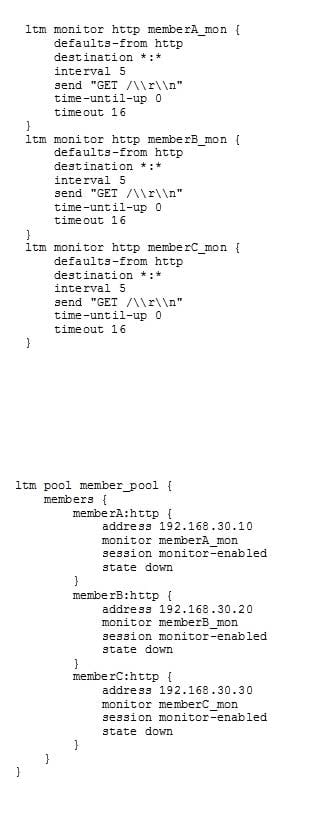
-- Exhibit -Refer to the exhibits.
How should the LTM Specialist minimize the configuration?
A. Remove the pool member level monitors.
B. The configuration is as minimized as possible.
C. Create a single monitor and apply it to each pool member.
D. Create a single monitor, apply it to the pool, and remove the pool member level monitors.
-
Question 25:
-- Exhibit
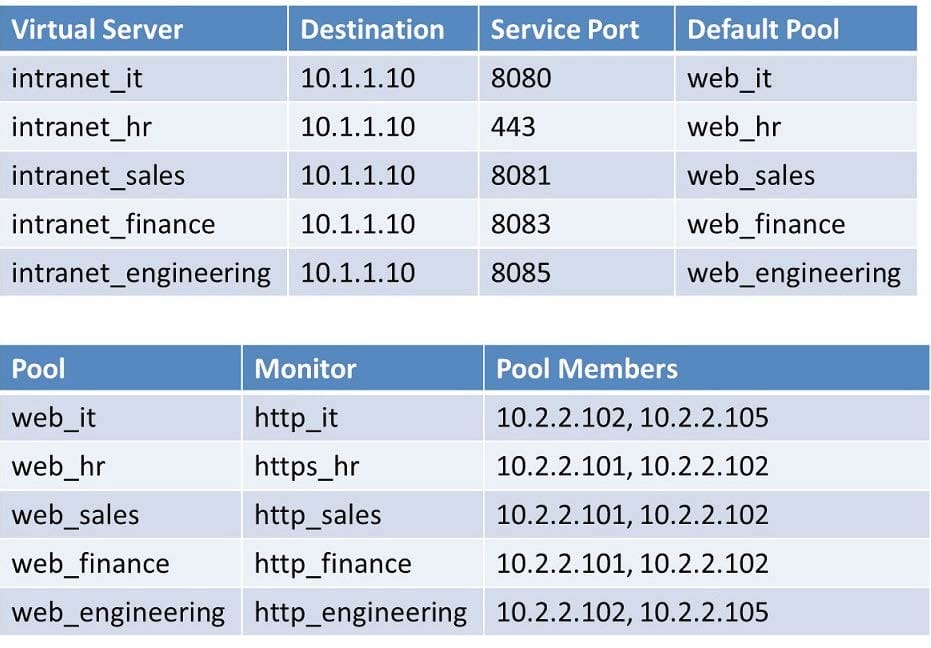
-- Exhibit -Refer to the exhibits.
Every monitor has the same Send String, Recv String, and an Alias of *:*. The LTM Specialist simplifies the configuration to minimize the number of monitors.
How many unique monitors remain?
A. 1
B. 2
C. 3
D. 4
E. 5
-
Question 26:
-- Exhibit
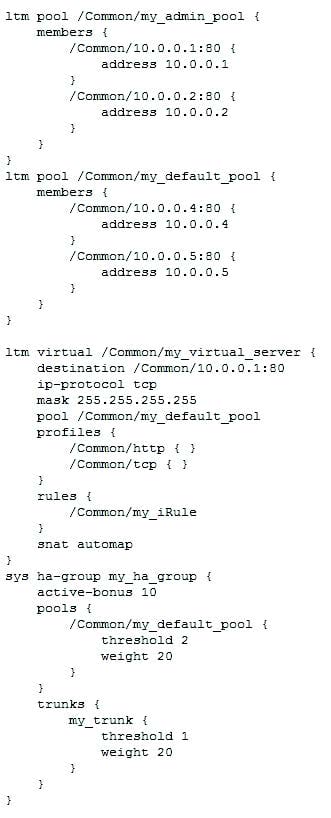
-- Exhibit -Refer to the exhibit.
A pair of LTM devices is configured for HA.
What happens if the pool member server with IP address 10.0.0.4 becomes totally unresponsive to the active LTM device, but is still responsive to the standby LTM device?
A. The HA-group will disable the trunk my_trunk.
B. The HTTP application will be unavailable via the LTM device.
C. The HA-group will initiate a fail-over because the threshold is set to 2.
D. The HA-group will initiate a fail-over because the HA-Group score will be zero.
-
Question 27:
-- Exhibit
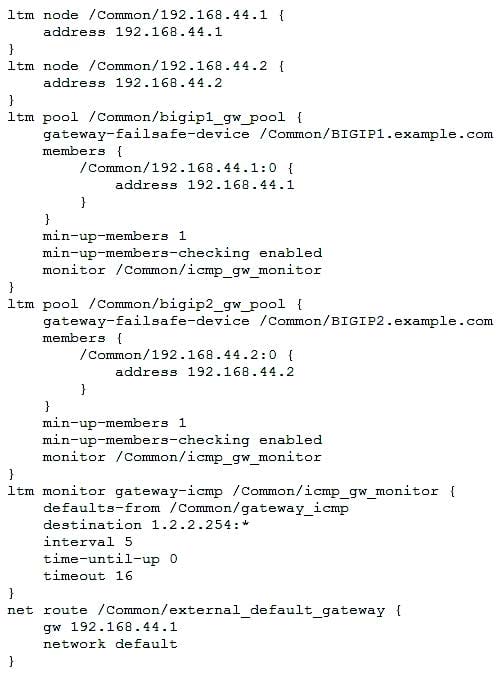
-- Exhibit -Refer to the exhibit. A pair of LTM devices are deployed in a high-availability (HA) pair as the diagram shows. After inserting a new rule on the firewalls, the LTM devices become Standby. The rule drops all outbound sessions to the Internet. Only inbound
connections are allowed from the Internet. There are no other changes to the environment. What triggered the LTM device failover?
A. HA Group
B. Auto Failback
C. VLAN Failsafe
D. Gateway Failsafe
-
Question 28:
-- Exhibit

-- Exhibit -Refer to the exhibit.
Based on the output of the tmsh interface show command, what is the issue?
A. There is a duplex mismatch on the management interface.
B. Interfaces 2.1 and 2.2 are defective and need replacement.
C. Flow Control is NOT configured on the management interface.
D. There are too many drops on inbound traffic on interface 1.1.
-
Question 29:
-- Exhibit
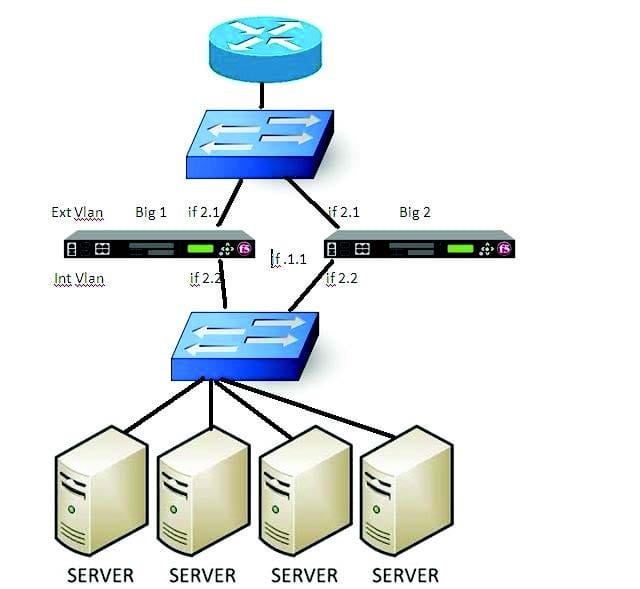
-- Exhibit -Refer to the exhibit.
A failover has just occured on BIG-IP1. BIG-IP2 is now active and manages traffic as expected. Both Bigip's are set with a gateway failsafe to check the reachability of the main border router.
Switches have performed as expected.
Where should the LTM Specialist check for potential issues?
A. Network Interface 2.1 of BIG-IP 2
B. Network Interface 2.1 of BIG-IP 1
C. Network Interface 2.2 of BIG-IP 2
D. Network Interface 2.2 of BIG-IP 1
E. Network Interface 1.1 of BIG-IP 1
F. Network Interface 1.1 of BIG-IP 2
-
Question 30:
-- Exhibit

-- Exhibit -Refer to the exhibit.
An LTM Specialist is troubleshooting a sync-failover group of three BIG-IP LTM devices. The command used is "tmsh run cm watch-devicegroup-device."
What does the output mean?
A. Configuration is synchronized between all the devices.
B. Configuration is not synchronized. Some modifications have been done on bigipA.
C. Configuration is not synchronized. Some modifications have been done on bigipB.
D. Configuration is not synchronized. Some modifications have been done on bigipC.
Related Exams:
101
Application Delivery Fundamentals201
TMOS Administration301A
BIG-IP LTM Specialist: Architect, Set up and Deploy301B
BIG-IP Local Traffic Manager (LTM) Specialist: Maintain & Troubleshoot771-101
Application Delivery FundamentalsF50-506
F5 FirePass 600 V5F50-531
BIG-IP v10.x LTM Essentials V10.xF50-536
BIG-IP ASM v10.x
Tips on How to Prepare for the Exams
Nowadays, the certification exams become more and more important and required by more and more enterprises when applying for a job. But how to prepare for the exam effectively? How to prepare for the exam in a short time with less efforts? How to get a ideal result and how to find the most reliable resources? Here on Vcedump.com, you will find all the answers. Vcedump.com provide not only F5 exam questions, answers and explanations but also complete assistance on your exam preparation and certification application. If you are confused on your 301B exam preparations and F5 certification application, do not hesitate to visit our Vcedump.com to find your solutions here.